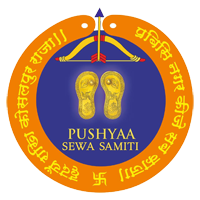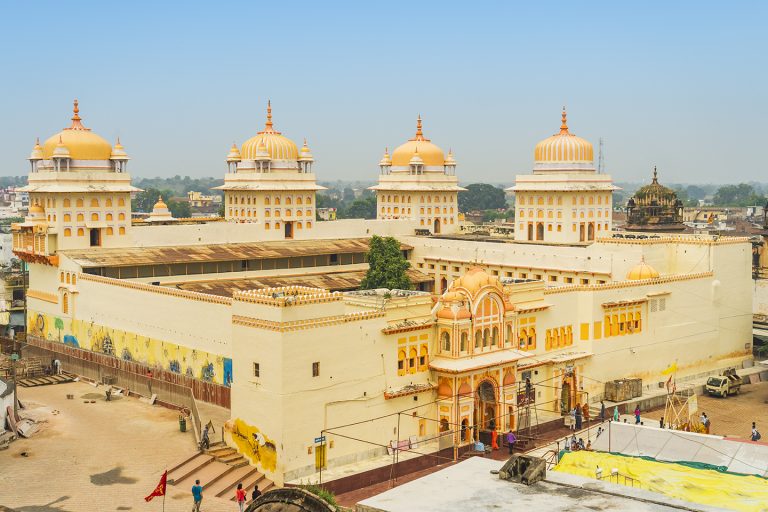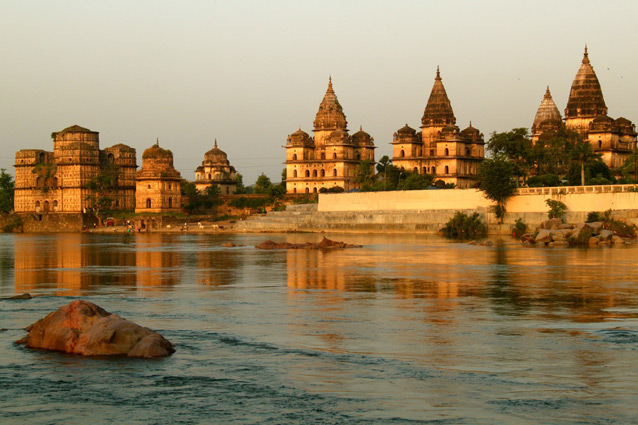Orcha - UNESCO World Heritage Site
Orcha or Urcha is situated in the heartland of India in Newari district in the state of Madhya Pradesh and is about 20 kms from the city of Jhansi, UP. The town is rich in natural beauty, heritage and history, religious importance and is the perfect weekend destination for many. Very recently, Orcha has been included in the prestigious list of UNESCO World Heritage sites.
Orcha also has the unique distinction of being an important place in the tradition of worship of Lord Ram, as the Lord is worshipped here not only as a God, but also as a Ruler/King. Hence, the salutation “Jai Sri Ram Raja Sarkar” is popularly heard at Orcha. There are strict rules regarding His worship, and royal protocols are followed including a Guard of Honour given to the Deity every time the “Aarti” takes place.
Located on the confluence of river Betwa and Jaamuni, the rulers of Bundelkhand, chose Orcha as their seat in the 16th century, and beautified the vicinity with various temples, forts, residential houses of military officers, broad roads, water reservoirs, gunpowder factory, numerous cenotaphs or “Chhattris” which, by themselves, are architectural master pieces. These temples and “Chhattris” stand serenely by the river Betwa and give perhaps the most iconic view of Orcha.
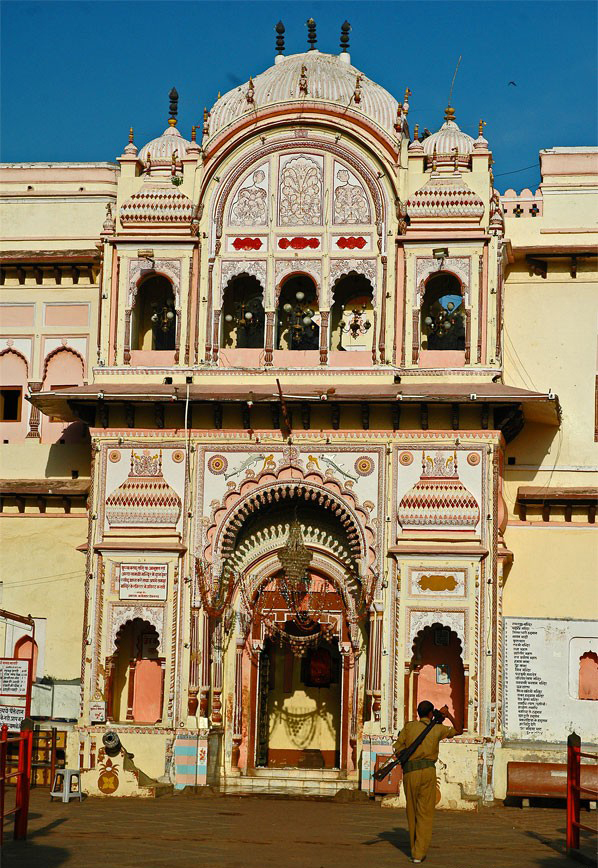
The grandeur of the erstwhile capital of the Bundela kings is reflected not only through the monuments but also remained intact because they were never defeated by the Mughals. As is believed, Orcha and its brave rulers always had the benedictions of Gods and Goddesses chiefly Lord Ram. This place is strewn with temples including Sri Ram Raja Temple, Chaturbhuj Temple, Lakshmi Temple and many more.
The most important amongst them is the Sri Ram Raja Temple, also known as Orchha Temple. It is a revered Hindu pilgrimage centre and every year more than 700,000 devotees throng this place during Makar Sankranti, Vasant Panchami, Shivratri, Ram Navami and Kartik Purnima. Lord Rama is worshiped as a king and unlike other temples HE is in a palace where a guard of honour is given every day. Like a king, Lord Ram has a sword in HIS right hand and a shield in the other and is sitting in Padmaasan position with the left leg crossed over the right thigh.
In the sanctum sanctorum, Sri Ram Raja is accompanied by his wife Maa Sita, his brother Lord Lakshmana, Lord Sugriva, Lord Hanuman, Lord Jaambvant, Lord Narsingh Bhagwan and Maa Durga.
The history of these temples goes back to the 16th century. The then king of Orcha, Madhukar Shah Ju Dev was a devotee of Lord Krishna while his wife Queen Ganesh Kunwari, was a devotee of Lord Ram. As per folklore, one day the King and the Queen went to Lord Krishna’s temple which was closed so the queen urged the king to return back to the palace but on the behest of king both decided to stay back. They joined a group of devotees who were singing and dancing in praise of Lord Krishna outside the temple. The king and queen also joined in the prayers and started to sing and dance. It is believed that Lord Krishna and Radha personified and danced with them and golden flowers were showered from the heavens at that moment.
After that incident the king asked the queen to accompany him to Braj-Mathura Vrindavan, the land of Lord Krishna, but the queen wanted to go to Ayodhya. The king got annoyed and asked the queen that if she was an ardent devotee of Lord Ram then could she make Lord Ram come to his kingdom, like Sri Krishna and Radha who came and danced with them.
However, Ganesh Kunwari insisted on going to Ayodhya and this angered the king. He allowed the queen to go to Ayodhya only on the condition that she should either get a child form of Lord Ram or else she should drown herself in Ayodhya’s Sarayu river. The queen in great despair left the palace and walked to Ayodhya on foot to bring Lord Ram with her to Orchha. Before leaving for Ayodhya, she ordered the royal officers to build the Chaturbhuj Temple as the abode of Lord Ram. The queen reached Ayodhya and offered her prayers by worshipping Lord Ram and Laxman. When Lord Ram did not appear she unrelentingly continued with her penance and intense prayers for a month and gave up food. She continued her prayer without food but when lord Rama still did not appear then out of despair she jumped into the river.
Lord Rama was pleased with her devotion and he appeared in child form in the Queen’s lap. She insisted that Lord Ram should accompany her to Orcha. The Lord agreed to go but set forth three conditions. His first condition was that he would travel only during Pushyaa (Pukh) Nakshatra. The journey would stop when the period ended and resume when Pushyaa Nakshatra sets in again. His second condition was that the journey to Orcha would only be on foot, and that they will be accompanied by saints. Thirdly, as he would be in the guise of a child, and sitting in the queen’s lap, so wherever she would make him sit without her lap that would be his final abode, and HE would be known as Ram Raja. The Queen agreed and started her journey back to Orcha with Lord Ram as a child in her lap. Since the queen travelled only during Pushyaa Nakshatra it took 8 months and 27 days for the queen to reach Orcha from Ayodhya on foot.
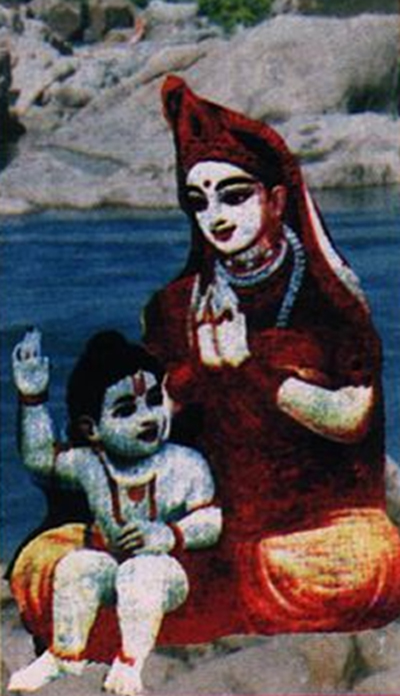
During the absence of the queen, the king, Madhukar Shah had a dream where Lord Krishna scolded him for discriminating between Lord Ram and himself as both of them were one and the same. The King was extremely remorseful and upon getting the news that the queen was returning from Ayodhya with Lord Ram as a child, he went to receive her with all pomp and pageantry and apologised for his behaviour. The queen did not accept the king’s apology and refused the comforts offered to her by the King. Upon reaching Orcha, the queen went back to her palace with baby Ram and retired to her room for the night, so that Lord Ram would be placed in the Chaturbhuj Temple the next day.
But according to Lord Ram’s conditions, that HE will take the first place where HE was seated, Lord Ram transformed into an idol and got transfixed in the queen’s palace itself. To this day the Sri Ram Raja Temple is in the queen’s palace and not in the Chaturbhuj Temple which is right next to the palace.
Sri Ram Raja Temple, the only one in India where Lord Ram is worshiped as a King, holds great significance in Orcha and around. So much so that it is said that if anyone gets married in the area, the first invitation goes to the temple. Getting married at the temple and leaving your handprint on the wall, is considered extremely auspicious by the locals. Today the former kings of Orcha still have a summer palace outside the town, but it is Lord Ram who is considered as the king, Raja, of Orcha.
Chaturbhuj Temple is another beautiful piece of architecture. The temple is dedicated to Lord Vishnu. The name Chaturbhuj is a combination of ‘chatur’ meaning “four” and ‘bhuj’ meaning “arms” which literally translates to “one who has four arms” and refers to Rama an Avatar of Vishnu. The temple has a complex multi-storied structural view which is a blend of temple, fort and palace architectural features. The temple was originally built to deify the image of Ram, as the chief deity, but the deity was installed in the Sri Ram Raja Temple. At present an image of Radha Krishna is worshiped in the temple. The temple is noted for having one of the tallest Vimana among Hindu temples standing at 344 feet.
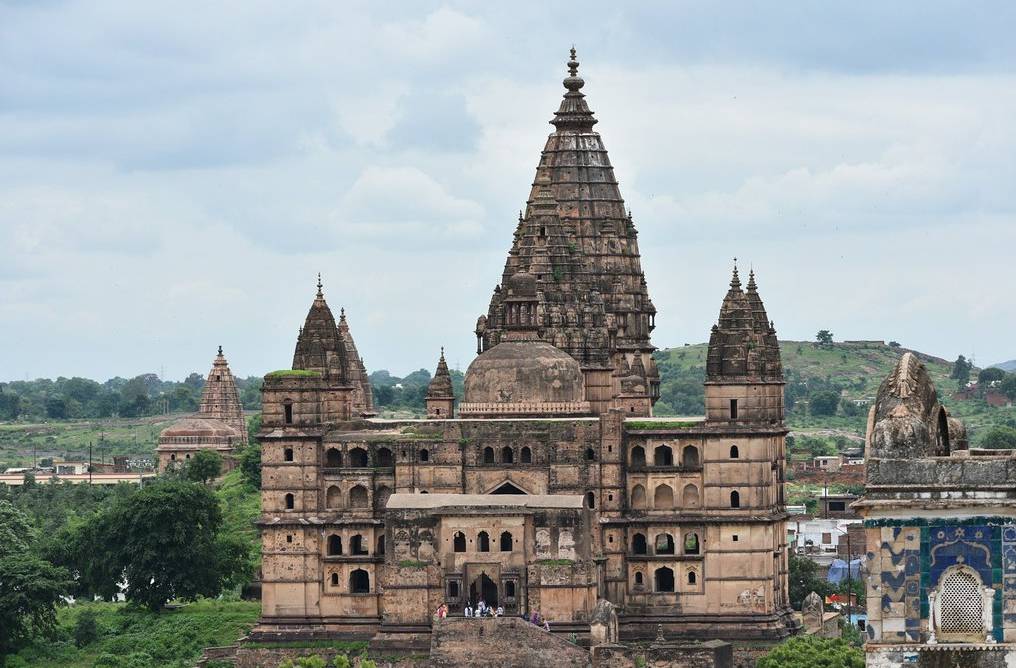
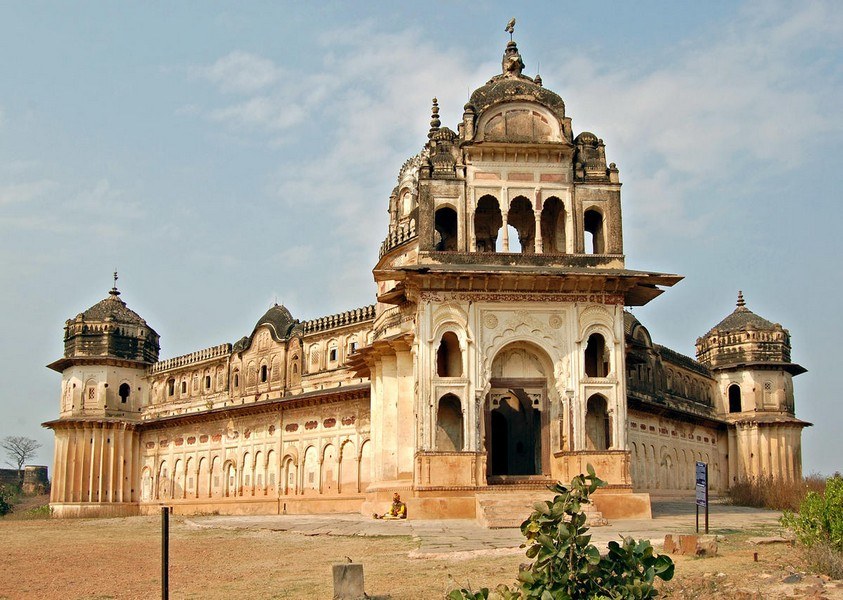
Another important temple is Laxmi Temple which is built on a square plan with a central dome, with smaller domes in four corners, much like the forts and palaces. The temple is uniquely proportioned and the standout part is the lovely murals on the roof and corridors. Hundreds of years old, some of the murals have fallen into a state of disrepair but others are fairly well preserved with original colours and details. The images portrayed of gods and goddesses, battle scenes from the Ramayana and Mahabharata and the clashes between gods and demons are grand, and despite the passage of time the natural dyes still hold their deep and rich colour.
Hardaul Baithaka is also a significant place of worship. Local folklore says that Kunwar Hardaul was the younger son of the then king Bir Singh Ju Dev. Upon his father s demise, Hardaul who was an able administrator and general assisted his elder brother Jujhar Singh Ju Dev. Hardaul s enemies kept on conspiring against him and were able to sow the seeds of distrust between the two brothers. Jujhar Singh gave poison to Kunwar Hardaul, who drank it knowingly and willingly to uphold his brothers wish and to clear the mistrust between them.
Later the palace in which Hardaul lived, which is to the side of Shri Ram Raja Mandir, became a place of worship and attracts thousands of devotees.
Apart from being the land of Gods and forts and palaces rich with folklores of valour and romanticism, the place also offers the charm of river rafting in Betwa river, Jungle safari at Orcha Wildlife Sanctuary, beautifully laid gardens, and the cenotaphs or “Chhatris” on the Betwa river with a serene and pristine atmosphere.
Information
PUSHYAA SEWA SAMITI
(UNDER THE AEGIS OF PUSHYAA FOUNDATION)
Reg. No. Patna 333/4/8, dtd. 5/9/2020
497, Sadar Bazar Cantt,
Jhansi (Uttar Pradesh) – 284001
India.
Email – pushyaa.orcha@gmail.com
Mob – +91 9693906852
feedback
For Online Services – +91 9693906852
Help Line No. – +91 9693906852
